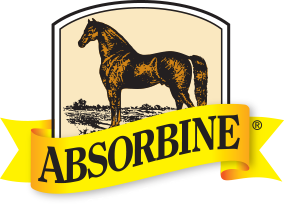 Hoof Nutrition Intelligence is a twice-a-month web segment that is designed to add to the education of footcare professionals when it comes to effectively feeding the hoof. The goal of this web-exclusive feature is to zero in on specific areas of hoof nutrition and avoid broad-based articles that simply look at the overall equine feeding situation.
Hoof Nutrition Intelligence is a twice-a-month web segment that is designed to add to the education of footcare professionals when it comes to effectively feeding the hoof. The goal of this web-exclusive feature is to zero in on specific areas of hoof nutrition and avoid broad-based articles that simply look at the overall equine feeding situation.
Below you will find the latest question and answer installment that you can share with your footcare clients.
Q: What role does copper play in hoof health?
By Eleanor M. Kellon, VMD
A: Copper is involved in enzymes required for aerobic metabolism in rapidly dividing cells. It is required for the activation of the enzyme which forms the sulfur crossbridges that hold keratin strands together.
In cattle, deficiencies of either copper or zinc have been linked to soft feet, hoof cracks, sole hemorrhages, abscesses, thrush (called “foot rot” in cattle) and laminitis.
Evaluation of trace mineral levels in the diet is a routine recommendation for cattle with hoof problems, including laminitis. This is important as high iron and/or sulphate levels in water can interfere with trace mineral absorption.
While bovine medicine is way ahead of equine in appreciating and understanding mineral functions in the feet, it needs to catch up when it comes to laminitis. Cows normally don’t have any absorbable glucose or starch because the organisms in their forestomachs ferment it before it can reach the small intestine. However, feeding high rates of grain can result in some glucose slipping through to the small intestine. Even young calves can become highly insulin resistant if fed too much free sugar.
Periods of high grain feeding are when laminitis is most likely to occur. The high likelihood of a link between insulin resistance and laminitis in cattle opens another realm for possible negative effects from high iron. This is because iron overload worsens insulin resistance and insulin resistance increases iron absorption.
Dr. Eleanor Kellon, a staff veterinary specialist for Uckele Health & Nutrition, has been an established authority in the field of equine nutrition for over 30 years. The owner of Equine Nutritional Solutions in Robesonia, Pa., she is a founding member and leader of the Equine Cushing’s and Insulin Resistance (ECIR) group, whose mission is to improve the welfare of horses with metabolic disorders via integration of research and real-life clinical experience. Prevention of laminitis is the group’s ultimate goal.
Click here to read part 1 of the Oct. 17, 2019 installment of Hoof Nutrition Intelligence: What is the role of calcium in hoof health?
Click here to read more installments of Hoof Nutrition Intelligence.
Hoof Nutrition Intelligence is brought to you by W.F. Young Co. (Absorbine). 
Like many significant achievements, Absorbine® grew out of humble beginnings—and through the tenacity of someone willing to question the status quo. In this case, it was a young woman in late 19th-century Massachusetts: Mary Ida Young. Her husband, Wilbur Fenelon Young, was an enterprising piano deliveryman who relied on the couple’s team of horses to make deliveries throughout the Northeast. Inspired by Mary Ida and Wilbur’s vision, Absorbine® has continued to add innovative products throughout the years — products used every day by horse owners around the world. Which is why, since 1892, we’ve been The Horse World’s Most Trusted Name®.

Post a comment
Report Abusive Comment